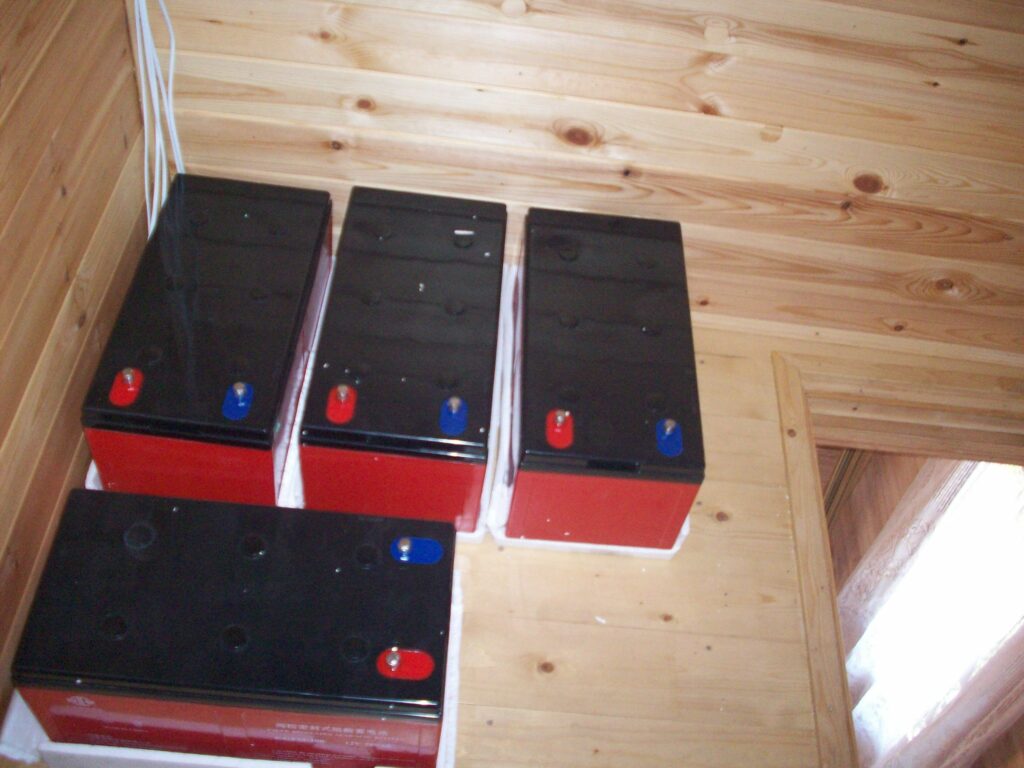
A 24-volt Solar battery will give you the best mix of cost vs. efficiency, and you might be wondering how many solar panels you will need to charge the 24v battery? This article will explore all the factors you need to consider to charge the battery efficiently.
To charge a 200AH 24V battery at its C/20 rate of 5 amps current for 24 hours, you’ll need at least 1 x 120 -watt solar panel. Given that you will not always get peak output from your solar panel, you will need to double or even triple that number to charge a 24v battery efficiently.
How big is your 24v battery?
The size of your 24-volt battery will have an impact on how many solar panels you will need to charge it. The capacity of 24-volt lead-acid batteries can range from 100AH to 400AH.
Lithium-ion batteries will be rated in kW, which is the product of amps multiplied by volts. You may wish to charge a single battery or several batteries if you have a battery bank. Batteries can be connected in parallel to keep the voltage constant at 24 volts or in series to increase the voltage to 48 volts.
Another option is to have 2 x 12 volt or 4 x 6-volt batteries that can also be connected in series to produce a 24-volt output.
What type of solar panel?
What type of panel, voltage range, and power output are you looking for?
If you use solar panels capable of 60v or more, you’ll need a charge controller capable of handling the maximum power and voltage and converting it to an appropriate output to charge whatever battery arrangement you’re using.
Even if you’re using smaller panels to charge batteries, you’ll still need a charge controller. Still, you’ll have to arrange the panels in series or parallel strings to match your battery configuration.
How much direct sunshine are you getting?
The amount of sunshine in the area where you are located will directly influence the output of your solar panels. If you have many cloudy or rainy days, you will have to factor that into the number of solar panels needed to charge your 24v battery.
If your solar panels are orientated south, you will also get more sunshine during the year’s varying seasons.
Days of autonomy
Autonomy refers to the days without direct sunshine that you will have to factor into your battery bank sizing, and this will also directly influence the number of solar panels that you will need.
The typical figure for autonomy is to divide your battery bank by the number of good days to bad days.
If, for instance, in summer, you get 3 days out of 4 good sunshine, you reduce your AH by 25%, and if in winter you only get 1 day out of 4 sunshine, you reduce your AH by 75%. This also effectively means that you have to increase your solar panel capacity by 25% and 75%, respectively, to charge your battery.
This has to be factored into how many solar panels you will need; otherwise, you might find yourself not being able to charge the battery during winter.
How fast do you want to charge the 24v Battery?
Another factor that you will have to consider is if you are using power from the solar panels to drive an inverter for the use of mains power, or are the solar panels solely used to charge the battery?
With the first option, you will have to consider the energy consumption of your appliances when determining how many solar panels you will need.
There are some basic premises to take into account:
- Lead-acid batteries is rated at its Ah capacity at the 20 hour rate. (C/20) That means a lead-acid battery shoiuld not be charged or discharged at a rate faster than that. For instance a 200Ah battery will then have a C/20 rate of 5 amps, and exceeding this number will damage the battery.
- It is especially harmful to a battery if it is charged faster than the C/20 rate. Lower amps over a longer period of time is much better for the health of the battery.
- In order to get the maximun number of charge and discharge cycles out of the battery, a depth of discharge (DoD) of 50% should not be exceeded.This means if you have a 200Ah battery you effectively have 100Ah to work with.
If you have a 200Ah 24v battery and you do not want to exceed 50% DoD, you have 100Ah to work with. Taking the C/20 rate into account, you have a maximum continuous discharge current of 5A, with a total load of 120W on the solar panel.
Charging the batteries at the same C/20 rate you are looking at charging at a rate of 5A for approximately 24 hours. By matching the charge controller and solar panel to your battery, you will need a 120W solar panel to do this.
How about first thing in the morning or late in the afternoon? The panel will only be putting out 30 –40 watts. Your panel will not produce 120Wx 12h throughout the course of a 12-hour day, but rather an average of 60W each hour.
This means that you will need 2 x 120 W panels.
Next, you will take into account the days of autonomy. In our previous example, we used 3 days out of 4 sunshine in summer and 1 day out of 4 in winter.
In summer, you would be fine with 2 x 120W panels, but you will have to increase it to 4 x 120W panels in winter.
Your batteries would charge a little faster in the summer (controlled by the charge controller) and about cope in the winter if you used 4 panels all year.
If you choose to use 2 panels year-round, you will cope in summer, but in winter, you will definitely not charge the battery to capacity.
